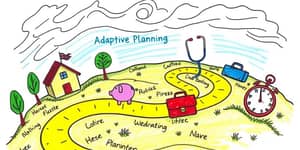
Years of financial stress can fade away when you gain control over your money. The first step is to split your expenses into two clear categories. This simple act can transform uncertainty into a plan and help you build stable baseline for financial planning.
Fixed expenses are the bedrock of any budget. These are costs that occur at regular intervals and remain consistent in amount. While they can sometimes be renegotiated, they typically form the non-negotiable foundations of your financial obligations.
Common examples include rent or mortgage, insurance premiums, and loan payments. Recognizing these payments helps you forecast your minimum monthly commitment and secure your basic needs first.
Variable expenses fluctuate in amount and frequency based on your lifestyle and choices. They offer flexibility but can derail a budget without careful monitoring. Identifying variable costs empowers you to cut back or indulge wisely, depending on your financial goals.
These daily or occasional spending items can include groceries, dining out, and entertainment. By mapping these expenses, you can spot patterns and take action before they spiral out of control.
Creating a clear boundary between fixed and variable costs provides both predictability and flexibility. It allows you to meet your essential obligations and allocate remaining funds to savings, investments, or discretionary spending.
When you categorize expenses accurately, you gain:
1. Collect all financial statements from the past three months, including bank statements and receipts.
2. Create two columns titled “Fixed” and “Variable” on a spreadsheet or notebook. List every expense accordingly.
3. For infrequent obligations, such as annual subscriptions or property taxes, divide infrequent payments into monthly estimates to smooth your budgeting process.
4. Calculate the total of each category and compare it against your monthly income. This snapshot reveals whether you’re living within your means.
Benchmarks can guide your allocation and highlight areas needing adjustment. While individual circumstances vary, the following table offers general targets.
After mapping, it’s time to refine. For fixed costs, negotiate lower rates or explore more affordable alternatives. Shop around for insurance, refinance loans, or consider cost-effective subscription bundles.
For variable expenses, establish spending limits for each category. Use cash envelopes or budgeting apps to stick to your predetermined caps. A simple grocery log can curb impulse buys and reinforce discipline.
Both categories benefit from automation of recurring payments to avoid late fees and maintain consistency.
One of the greatest advantages of mapping expenses is understanding how much you need to save for true financial security. Aim for an emergency fund covering three to six months of your essential and predictable monthly commitments. This cushion shields you from unforeseen events like job loss or medical emergencies.
Even with a map in hand, obstacles arise. You might underestimate certain variable expenses or let subscriptions slip by unnoticed. Regularly reviewing your categories keeps your budget aligned with real life.
If you find yourself overspending, prioritize: cover fixed costs first, then allocate remaining funds to variable items. Adjust your caps or find alternatives, such as home-cooked meals instead of dining out.
track spending with clear categories by setting monthly reviews, and celebrate small wins when you stay within limits. This habit reinforces positivity and fuels ongoing progress.
Mapping out fixed and variable expenses is more than an accounting exercise; it’s an act of self-determination. As you refine categories, negotiate bills, and limit discretionary costs, you reclaim power over your financial destiny.
Embrace this process with curiosity and patience. Early efforts may feel tedious, but over time you’ll discover newfound freedom: reduced anxiety, clear goals, and the ability to fund dreams rather than just pay bills.
With every precise entry and thoughtful adjustment, you step closer to a budget that reflects your values and aspirations. Let this guide serve as your companion on a journey to financial confidence and long-term personal growth.
avoid financial stress and anxiety by choosing clarity over chaos, and remember that every dollar mapped is a step toward peace of mind.
Set a recurring reminder to revisit your expense map monthly. Life changes — new jobs, moving cities, expanding families — will shift your fixed and variable costs. Adapt your budget accordingly to stay on track.
Finally, leverage simple tools like spreadsheets, budgeting apps, or even a dedicated journal. The key is consistency and transparency with yourself. Over time, this practice pays dividends far beyond your bank account: confidence, resilience, and the freedom to pursue bigger goals.
By clearly separating your fixed and variable expenses, you create a financial roadmap that leads you toward security and opportunity. Start mapping today, and empower your financial decision-making journey.
empower your financial decision-making journey through structured budgeting and watch your financial goals become reality.
References













